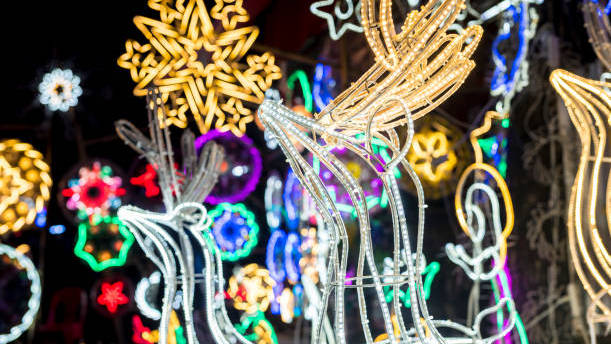Latin American and Europeanguest artists to the Dissident Cartographies (2007-2009) exhibition, sponsored by the State Society for Spain’s Outer Cultural Action (SEACEX) with the collaboration of a number of other institutions, were Antoni Abad, Gloria Marti, Minerva Cuevas, Alexander Apostol, Mario Navarro, Carlos Garaicoa, Carmela Garcia, Itziar Okariz, Grupo de Arte Callejero and Hannah Collins.
As a result of the projects and itinerary exhibits stemming from this major event, SEACEX put out in 2008 an excellent book-catalog, a voluminous material containing texts penned by renowned critics and intellectuals, including that restless iconoclast of Latin American social and cultural fabrics, the late Mexican writer Carlos Monsivais. The texts are complemented by vast graphic material filed in one of the project’s nine videos, all of them culled in a DVD that comes with the catalog.
As the foreword note signed by the editors reads: “This initiative reflects a suggestive blend of art and reality, in this case through an active dialogue among several authors and a similar number of Iberian-American cities seen in their daily lives by the authors’ documentary films.”
The artists shot videos that, in the underground of social behavior, took a number of Iberian-American cities as both pretext and scenario for their films, all of them documented in a kaleidoscopic tour with the following titles and cities: From the other side of the city (Abad-Marti) in Sao Paulo; Dissidence Cartography (Cuevas) in Mexico D.F.; Ghost City (Apostol) in Caracas; The Sad Punk (Navarro) in Santiago de Chile; The Year of the Rat (Garaicoa) in Havana; No Walking on Grass (Garcia) in Madrid; Bilbao (Okariz) in Bilbao; The Game of Life (Grupo de Arte Callejero) in Buenos Aires, and The Mine (Collins) in Barcelona.
 These artistic events carry new questions and reflection, a nonstop provocation starred by people, spaces, words, silences. Each and every intervention singles out the artists’ works –they always do it in teamwork–related to a particular topic or experience of undisputed strength and complexity, as part of their city of choice. I’d like to browse some of these piquing documents, regardless of their esthetic and thematic vocation.
These artistic events carry new questions and reflection, a nonstop provocation starred by people, spaces, words, silences. Each and every intervention singles out the artists’ works –they always do it in teamwork–related to a particular topic or experience of undisputed strength and complexity, as part of their city of choice. I’d like to browse some of these piquing documents, regardless of their esthetic and thematic vocation.
From the Other Side of the City, made by the duo of Antoni Abad and Gloria Marti, unfolds in the city of Sao Paolo under the topic of motorists that circulate anarchically as an expression of economic survival and rebelliousness, the motor boys that carry their urban fares in a city of over 20 million inhabitants, populated and jammed by traffic. The newspaper headlines –showing more interest in the tabloid stuff than in making social claims– remind us of traffic violations as they circulate boldly among the vehicles and with that suicidal style that takes the lives of so many motorists. The sign of life in the big city represented by the motor boys that mock at speed limits and the spaces that overlap the image of death among the drivers that vie in this adventure of courage to try to make ends meet. The backdrop of their daily drama is made up of the city’s huge skyscrapers.
On the other hand, Hannah Collins picked the slum of La Mina to contrast the opulence of fancy Barcelona, Spain’s largest economic center, in a bid to lay bare just another place where the Third World tries to get by in a First World that ignores it and snubs at it. The largest chunk of La Mina population is made up of gypsy immigrants hailing from Andalusia, something that leads us to a reading that has acquired new shades of reality in today’s rich and civilized European community, where gypsies are now being kicked out of France and other countries, with the aggravating factor that these are not nomads coming from Romania or Hungary, but rather from Spain, where they are equally hunted down, thrown into oblivion and expelled from their land.
In addressing another big-city scenario, like Mexico’s D.F., Minerva Cuevas brings her Dissidence Cartography as she leads us to unearthing –like in multiple mirrors– the ideological emergencies reflected by both words and symbols. Flags, cloths, posters, billboards of all kind, graffiti where in the countless protests, demonstrations and meetings the rebelliousness of society’s most popular sectors is reflected, where Coca Cola can melt into the Workers’ Cooperative, or houses made of recycled materials stand out, plus many other expressions of the city life.
In the need to force the limit of identity, Carmela Garcia comes up with her No Walking on the Grass. The issue that “we are the maps, the places, the cities” –either in Madrid or somewhere else– boils down the drama of all those who have been convened in this recording. One of the main characters paints us a pretty clear picture of this feeling of separation: “you can change the city, but you can’t change the well.”
In Havana’s Chinatown, with over a century and a half of existence, its period of bonanza can only be stacked up against the Chinatown of San Francisco, California, in the western hemisphere. Today, Carlos Garaicoa shows us the ruins and the survivors of its glorious past, and the signs of the new times, of fakery and legitimacy, its contradictions and representations. In his documentary video The Year of the Rat, Garaicoa goes over systems and individuals full of question marks that come before our very eyes.
Out of the videos I liked the most –perhaps I was moved by literary or personal associations– Mario Navarro’s The Sad Punk, taking place in Santiago de Chile, is the reconstruction of the “sentimental education” of an entire generation marked by the years of the Pinochet dictatorship. Alexander Apostol’s Ghost City is an intimate portrait of individual and familiar ghosts of a city: Caracas, from the most popular sectors to the upper middle class, where the houses belonging to a number of urbanization processes and neighborhoods of Caracas are served as sets. Either in Las Acacias, Pinto Salinas, Vista Alegre or Palos Grandes, the panorama includes the Colinas de Bello Montes and Petare, or in either one of them the urban ghosts roam the streets, reminiscences of the oil and real-estate boom of the 1950s that brought along new tokens of power in the new housing projects. It’s a closer look in space and time into the former “city of the red roofs.”
These “other” urban readings in so many different looks are part of the individual imagery of the “parallel cities”, which are the “real” cities, the “formal” cities, the “literary” cities, the cities recreated by the artist’s eyes and hands, the one people dreamed of or lived in, the one of every sadness and every happiness, the city of nightlife and daybreak, the city of the high noon, of our beloved dead and the daily interlocutors, the personal and strange city, the one that remembers and is remembered.
The bustling city and what’s more: the sound of routine and conversations, the emptiness of the silences, the balconies that open up, the porches, the rooftops, the façades shrunk from the distance, windows, mandatory codes for the visual tour.
History in uppercase shapes the urban logbook of everybody. As Gunter Grass would put it, “private life is always uninterrupted by historic developments.” Now I pause in the dramatic character of these images where the context of avenues, skyscrapers, slums and skid rows end up celebrating the bodies. These writings start out only to end in the city, which are the bodies.
From our present we look at these areas that stare down at us from their past. As Beatriz Sarlo speculates, “touching the city means to reach a territory that has supported many of our own interventions. But, and virtually always in the first place, the city is the scene per se for the intelligentsia, and writers –as well as their readers– are all urban players.” By entering those territories, of commented games and experiences, we turn receivers of the message into front-line accomplices.
These are the cartographies of power and individual resistance, of rebelliousness and defeats, in the field of structures of the system that rules each and every urban compound. Where every artist existed in the recreation of video and in his professional experiences, nourished by their will of style, in their quest for other worlds, perceptions of what daily life and the invisible are actually like, things that we do not get used to forewarning or we just don’t want to tackle.
El Vedado, Oct. 2010
Cartografías disidentes, Sociedad Estatal para la Acción Cultural Exterior de España (SEACEX), Barcelona, 2008.
Publicaciones relacionadas

















